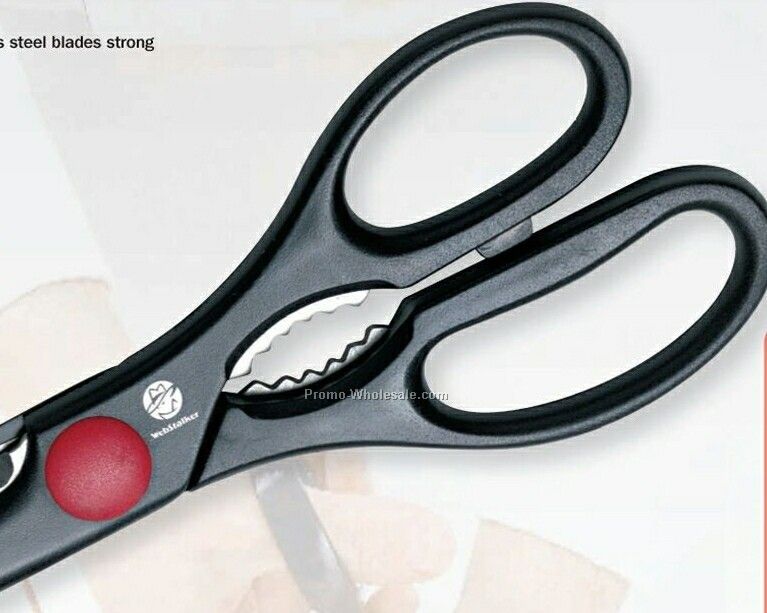I have a pair of stainless steel kitchen sheers sitting on my desk. As a highly useful product, it is no wonder this tool is mass produced. While many of the attributes of its design were chosen for their logical usefulness, others, like the achromatic black coloring, were chosen for aesthetic purposes. The asymmetry of the handles was incorporated in order to fit a hand more comfortably (as one handle holds four fingers, the other one, one handle is naturally longer with more room than the other). While a practical choice, there is no doubt that a certain unique visual dynamic is given to a piece of art or industrial object when asymmetry is part of the design.
The serrated edge on one of the scissor's blades along with those in between the two handles show a pattern, repeating this module of the object in an anticipated sequence. The serration is important for the scissors to cut through tough foods in the kitchen, such as chicken bones. The designers could have stopped the serration half-way down the blade and the tool could have retained the ability to cut chicken bones, but this would be less aesthetically pleasing, so there was no reason to do so.
The entire form of the kitchen sheers create unity. Without the asymmetrical handles, or the black coloring, or the serrated edge, the scissors would not be the successful product that they are today. A success for the industrial designer; “I like to look at it and I like to use it”!

No comments:
Post a Comment